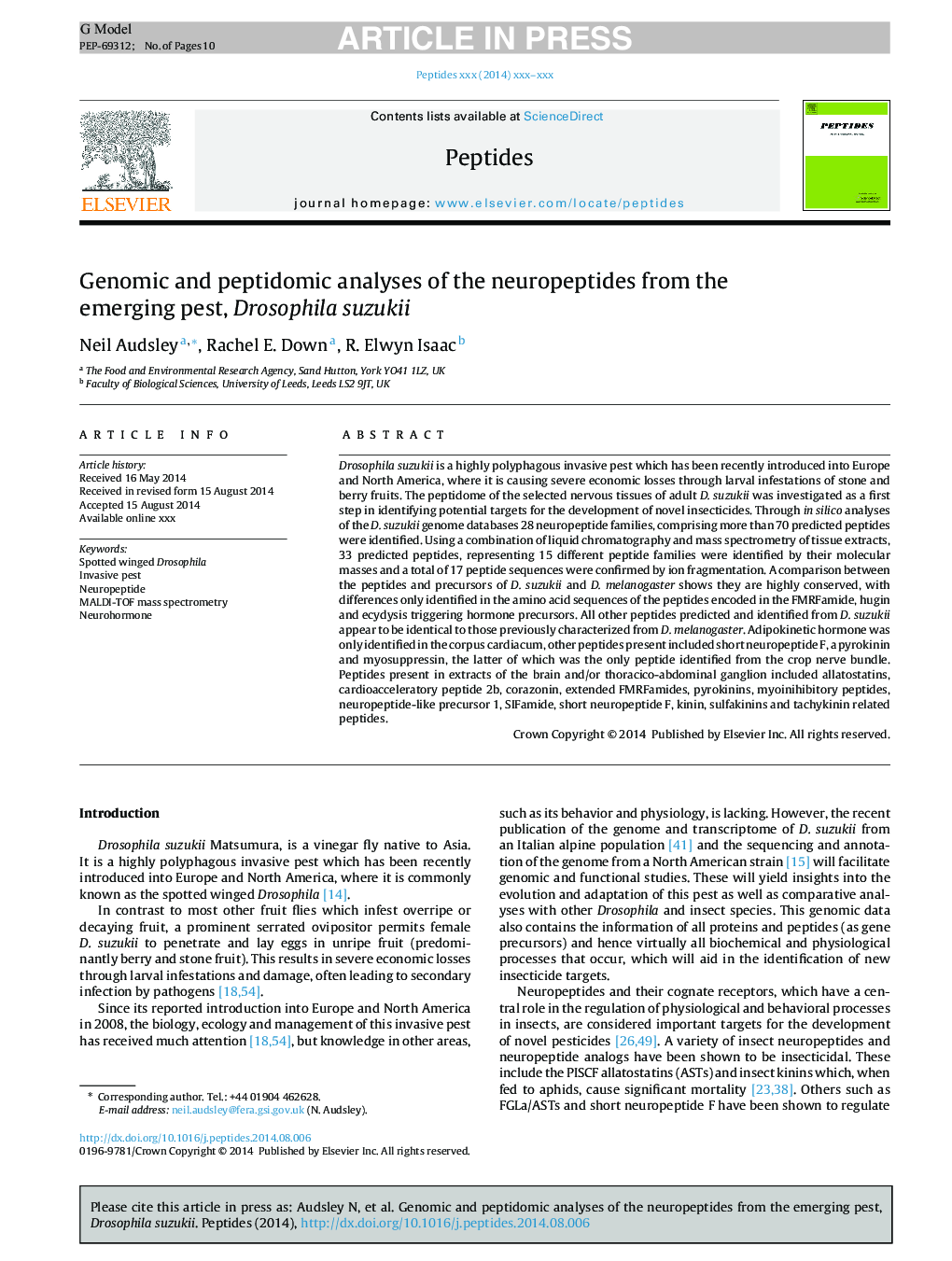| Article ID | Journal | Published Year | Pages | File Type |
|---|---|---|---|---|
| 8348012 | Peptides | 2015 | 10 Pages |
Abstract
Drosophila suzukii is a highly polyphagous invasive pest which has been recently introduced into Europe and North America, where it is causing severe economic losses through larval infestations of stone and berry fruits. The peptidome of the selected nervous tissues of adult D. suzukii was investigated as a first step in identifying potential targets for the development of novel insecticides. Through in silico analyses of the D. suzukii genome databases 28 neuropeptide families, comprising more than 70 predicted peptides were identified. Using a combination of liquid chromatography and mass spectrometry of tissue extracts, 33 predicted peptides, representing 15 different peptide families were identified by their molecular masses and a total of 17 peptide sequences were confirmed by ion fragmentation. A comparison between the peptides and precursors of D. suzukii and D. melanogaster shows they are highly conserved, with differences only identified in the amino acid sequences of the peptides encoded in the FMRFamide, hugin and ecydysis triggering hormone precursors. All other peptides predicted and identified from D. suzukii appear to be identical to those previously characterized from D. melanogaster. Adipokinetic hormone was only identified in the corpus cardiacum, other peptides present included short neuropeptide F, a pyrokinin and myosuppressin, the latter of which was the only peptide identified from the crop nerve bundle. Peptides present in extracts of the brain and/or thoracico-abdominal ganglion included allatostatins, cardioacceleratory peptide 2b, corazonin, extended FMRFamides, pyrokinins, myoinihibitory peptides, neuropeptide-like precursor 1, SIFamide, short neuropeptide F, kinin, sulfakinins and tachykinin related peptides.
Related Topics
Life Sciences
Biochemistry, Genetics and Molecular Biology
Biochemistry
Authors
Neil Audsley, Rachel E. Down, R. Elwyn Isaac,
